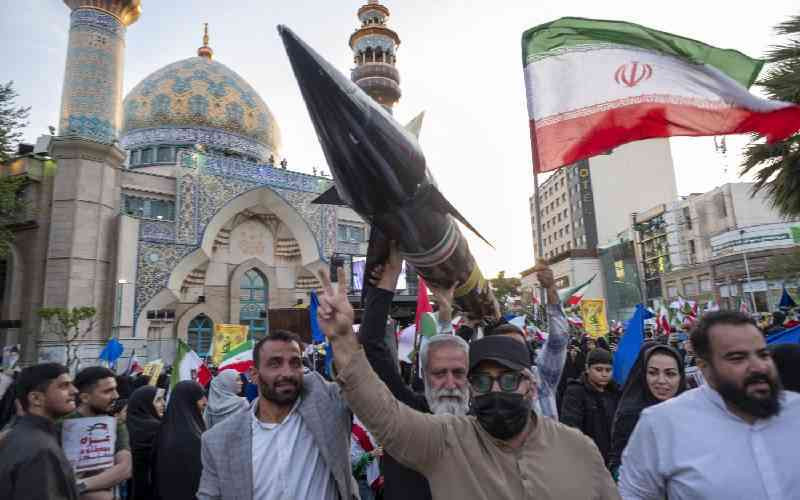For more than a decade, the Kenyan Government has talked of plans to set up strategic petroleum reserves. Had it been successful, drawing down from the reserves in moments such as this when retail fuel prices are inching close to record highs could help ease the situation while enabling restocking when prices go down globally.
This simple (albeit cost intensive), yet critical, initiative would have cushioned Kenyans against sudden hikes in the cost of fuel locally should there be a jump in the price of oil in the international market, as it is currently the case.
They would also ensure there are sufficient stocks to cover the country’s petroleum needs for up to three months should there be major shocks in the international markets, putting Kenya in a position that it might not have access to petroleum products.
The price of oil has a multiplier effect on the economy; a high price is a drag on growth and vice versa. It is the job of governments therefore to put in place measures that will cushion the citizens from the attendant shocks arising from a jump in oil prices.
High fuel prices push the cost of doing business up and consequently the cost of basic commodities.
It discourages investment, thereby undermining the creation of jobs and progress. Take for example transport costs: Currently, transport consumes up to two-thirds of the average income for most urban dwellers- more than even food, education and healthcare. This is the group that literally turn on the economic mortar. It is easy then to fathom what it means when they do not turn up for work because they couldn’t afford bus fare to work.
If nothing, those in the Jubilee administration should appreciate what high oil prices could do to its development agenda- the Vision 2030 blueprint and especially President Uhuru Kenyatta’s Big Four agenda of which manufacturing is a critical pillar.
Kenyans are right to feel disappointed that the discovery of oil in Turkana has not translated into cheap fuel prices at the pump. The fact is, we are far off from being a net exporter of oil.
And so, as an importer, there is more that we could have done to cushion ourselves.
To put the strategic reserves into perspective, oil prices were at a low of about Sh5,000 ($50) last December. These low prices are what resulted in a decline in local pump prices to Sh100 per litre of petrol in Nairobi; prices that had been last seen more than an year earlier in October 2017. Had the strategic petroleum reserves infrastructure been in place – which is nothing more than expansive storage tanks – the country could have acquired adequate stocks to ensure that when the prices started climbing up, the stocks in the strategic reserves could be used to stabilise prices by fusing them with stocks acquired at high prices.
Thus, while a litre today might not reflect the $50 price that the strategic stocks would have been acquired at, if the plans had been implemented, it would also be slightly mild and not reflective of the current high of $71 that crude oil is going for in the international markets. This has however not been the case and Kenyans have to bear the brunt of the Ministry of Petroleum officials’ lack of foresight or outright incompetence.
The failure to have the petroleum reserves in place has not been due to the fact that the country has never needed such infrastructure and accompanying products. The case for them has always been there.
This is considering Kenya’s downstream oil sector has always been hit by major shocks, in many instances, operating on a seeming fulltime crises mode on account of inefficient equipment operated by the players along the chain that have always resulted in shortages lasting days, major oil spills and ships waiting for days before they can discharge imported products.
Whenever any of these shocks hits the industry, the talk of strategic stocks always comes up. But as with many brilliant plans that Kenya has developed but not implemented, these are soon forgotten as soon as the situation normalises.
The height of these hiccups was in 2008 when there were numerous shortages as well as record high oil prices globally when prices of oil hit $147 per barrel. Then the Ministry of Energy even published the Energy (Petroleum Strategic Stock Regulations), which set out how the National Oil Corporation and the Kenya Pipeline Company would work together in setting up the infrastructure and managing the stocks. According to the regulations, the Government would in the initial years set aside some money for the acquisition of stock for the reserves
Stay informed. Subscribe to our newsletter
Nock had even at some point competitively selected three firms that it would work with in a Public Private Partnership (PPP) fashion to build the storage tanks as well as mobilise funds to acquire the initial stock of a billion litres of different petroleum products - enough to last the country 90 days -should there be need to draw from the reserves for such a long duration.
 The Standard Group Plc is a
multi-media organization with investments in media platforms spanning newspaper
print operations, television, radio broadcasting, digital and online services. The
Standard Group is recognized as a leading multi-media house in Kenya with a key
influence in matters of national and international interest.
The Standard Group Plc is a
multi-media organization with investments in media platforms spanning newspaper
print operations, television, radio broadcasting, digital and online services. The
Standard Group is recognized as a leading multi-media house in Kenya with a key
influence in matters of national and international interest.
 The Standard Group Plc is a
multi-media organization with investments in media platforms spanning newspaper
print operations, television, radio broadcasting, digital and online services. The
Standard Group is recognized as a leading multi-media house in Kenya with a key
influence in matters of national and international interest.
The Standard Group Plc is a
multi-media organization with investments in media platforms spanning newspaper
print operations, television, radio broadcasting, digital and online services. The
Standard Group is recognized as a leading multi-media house in Kenya with a key
influence in matters of national and international interest.









